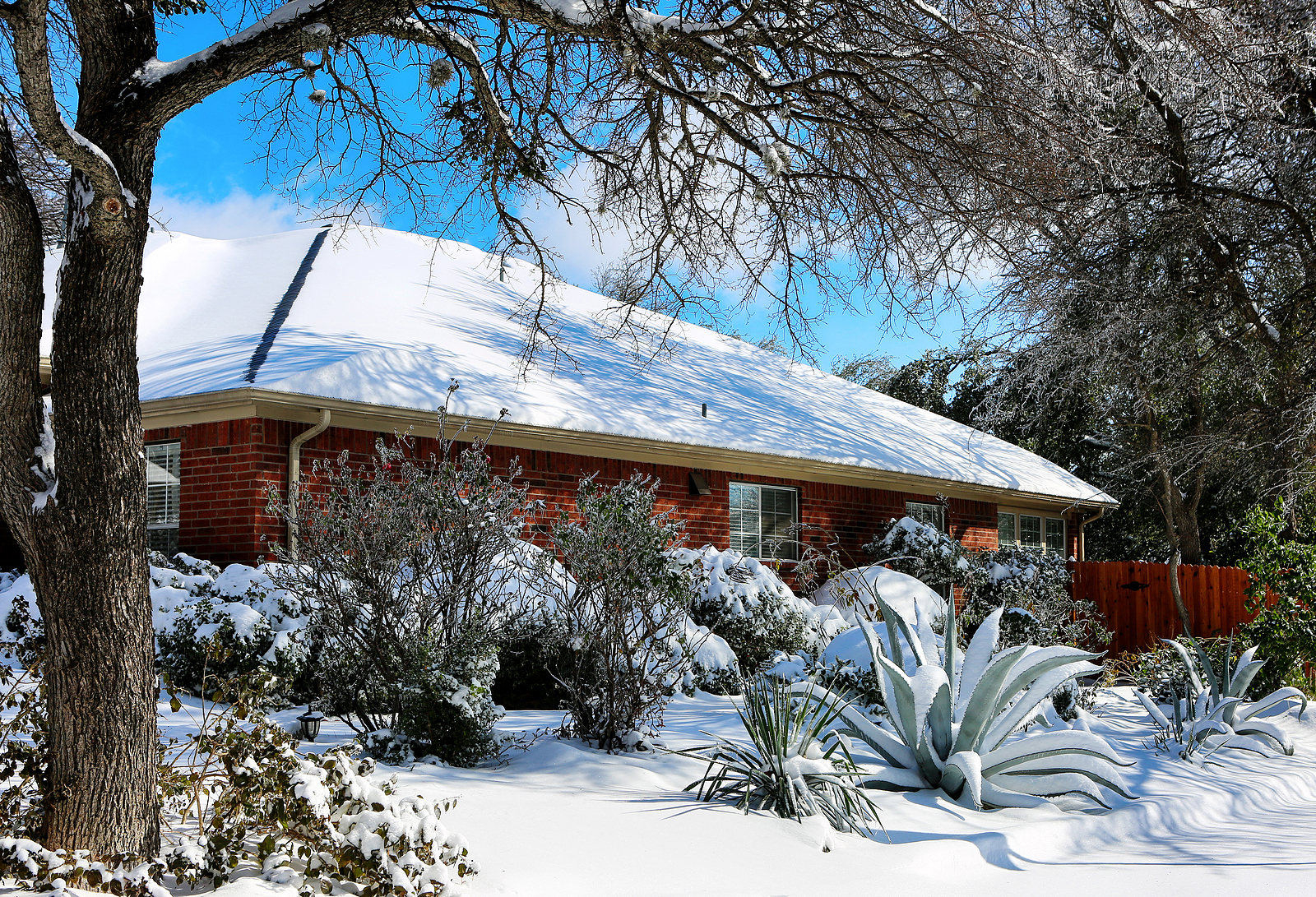Winter can brutal on our homes. In conversations with our clients who bought homes last summer and fall, we’re hearing a lot of confusion about how to deal with Mother Nature’s aftermath.
So, this month, we’ve decided to help give you a leg up and become proactive by answering some of these questions. We’ll start with roof issues, since these seem to be the most common complaint we’ve heard.
Roof damage
Naturally, we heat our homes in the winter. But, while that heat is keeping us warm and toasty inside, it’s also melting the ice of the roof.
Typically, the resulting water will end up in the home’s gutters and downspouts, which aren’t feeling the heat from the interior of the home. So, the water refreezes, forming what are known as “ice dams.”
The melted ice may also invade the roof’s flashings, causing damage to the attic.
Even if the ice doesn’t melt, the mere accumulation of snow and ice may become too heavy for the roof to hold and it will collapse.
Reduce the risk of clogged gutters by ensuring they are kept clean of debris as we head into winter. Hire a professional to remove ice and snow from the roof if you suspect it has become too heavy.
“The warning signs of a roof collapse include interior sagging ceilings, consistent creaking noises, difficulty opening and closing windows and doors, and more,” according to The Roof Doctor in Utah.
Ew, mold!
Those aforementioned pesky ice dams bring with them even more trouble.
The process of freezing and thawing that creates and enlarges the dam causes moisture with nowhere to go but into the attic and below.
This, in turn, may cause damage to insulation and drywall. It definitely creates the perfect atmosphere for mold grow.
But this isn’t the only area that mold may find hospitable. “In homes tightly sealed for winter, warm air can’t easily escape,” the mold experts with Comprehensive Mold Management in Rochester, NY. tell the Democrat and Chronicle.
“When windows are sealed tight, condensation tends to collect indoors on windows and even walls, creating an optimal area for mold to grow,” they continue.
Kitchen and bathroom steam can also create some of mold’s ideal atmosphere.
Wet basements
A basement radiates heat up to 8 inches outside the basement walls, according to the pros at Triad, a basement water solution company in Gaithersburg, MD.
That radiated warmth will melt frozen soil and snow, creating more moisture that may seep into the home.
The experts at Triad suggest that replacing poorly-draining soil around the basement with clean fill dirt may be the key to directing the melted snow away from the home.
Repair cracks in the basement’s walls and floor and ensure that the sump pump is working properly.
Then, turn your attention to the windows. Ensure they’re properly sealed and that the window wells have drainage holes and that those holes aren’t clogged with dirt.
Check the home’s gutters and downspouts. If these features aren’t installed properly, or routinely maintained, they have the potential to do more harm than good,” according to the pros at Triad.
The yard
Another common problem that winter visits on our homes has to do with the slope of our yard. Yours slopes away from your home, right? Like the downspouts, proper slope helps direct excess water away from the home. It should slope 6 inches down, away from the house.
Want to figure out the slope? This YouTube video offers an inexpensive, easy way to do so.
Feel free to reach out to us if you need help becoming proactive before winter. We have lots of tips that we’re happy to offer.






